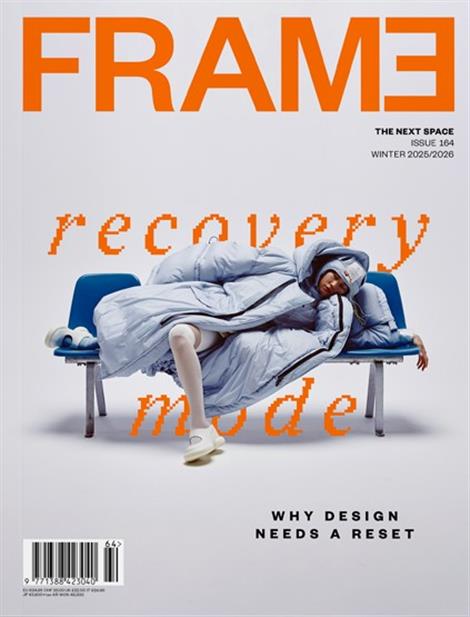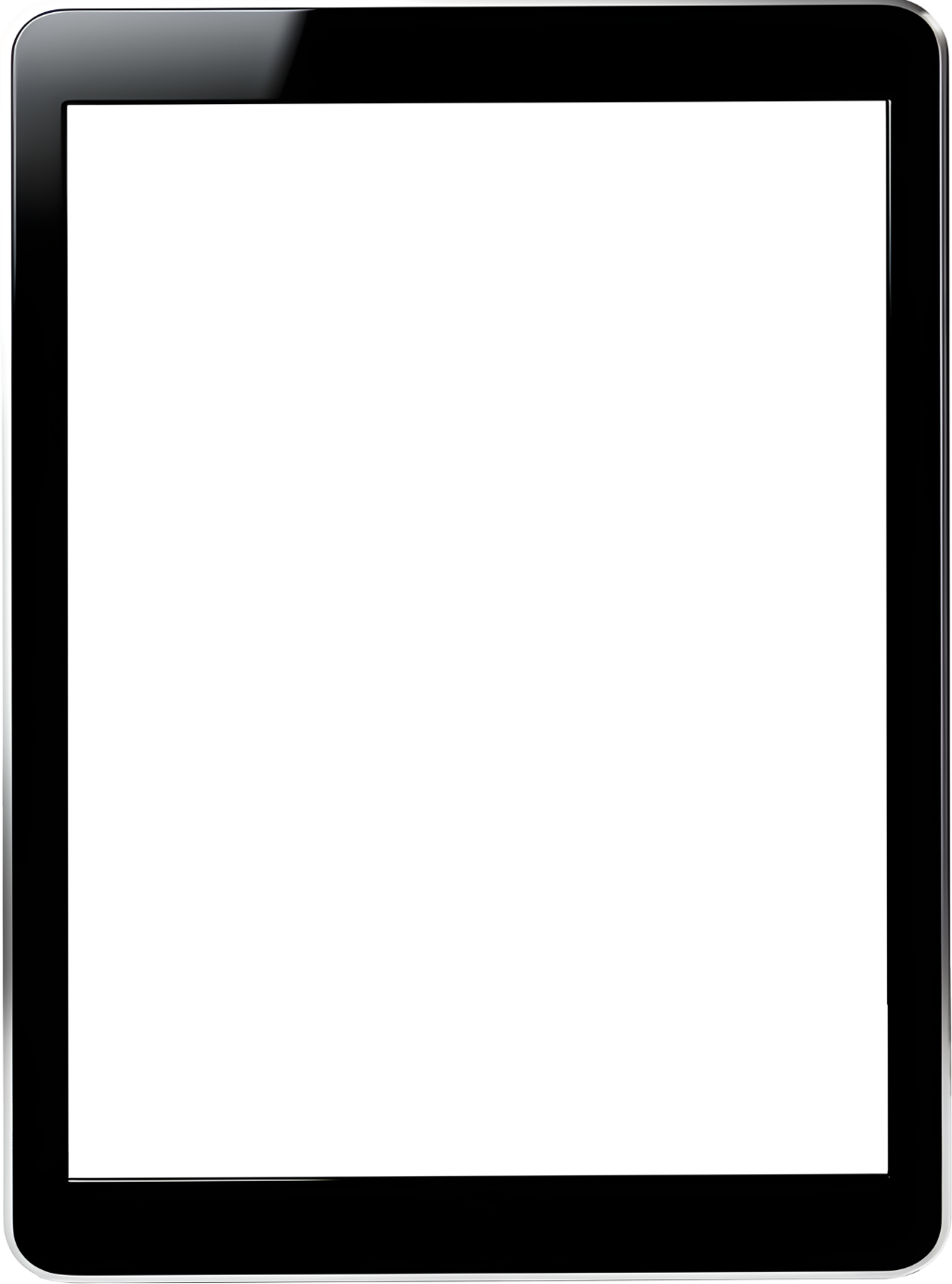


‘We haven’t got time to get things wrong again’
Instead of inventing new solutions, longevity and climate resilience might come from reviving Indigenous, nature-based technologies that see humans as Earth’s custodians. Cave_Bureau and author Julia Watson explore how such approaches reshape building, tackle food and water scarcity, and address natural disasters—discussed in a FRAME talk moderated by Riya Patel.
BUILT TO BREAK DOWN
Not everything needs to last forever – but convincing an industry obsessed with durability isn’t easy. Crafting Plastics is rewriting the rules of material longevity, creating bioplastics that are strong enough to perform but smart enough to know when their job is done.
‘DESIGN MUST SHIFT FROM MAKING THINGS TO MAKING SENSE OF THINGS’
As the world faces urgent global challenges, designers can play a much bigger role than dreaming up pretty spaces and products. They can take on entire systems, influencing society and culture. How can design become a tool not only for innovation but for meaningful, lasting change?
How live music is becoming a platform for climate activism
With engaged audiences and an industry shaped bycultural influence, live music has a powerful platformto not only promote environmental values but to drivereal change by putting sustainability into practice.
‘New perspectives naturally lead to play’
Yohei Terui and Hiromu Yuyama – founders of Japanese studio I IN – discuss why physical spaces that encourage spontaneity, discovery and deeper emotional engagement are more important than ever.
ÞYKJÓ
By dreaming up their experiential designs collectively – with artists, scientists, scholars and children – Icelandic alliance Þykjó is on a mission to craft free-play opportunities for everyone, everywhere.
Bio boom
With all its reported benefits – including stress reduction and increased productivity – biophilic design is continuing to grow. In our fifth selection of curated products from Material Bank – an ultra-efficient sampling service with over 40,000 materials from hundreds of brands – we focus on the flourishing sector of nature-inspired surfaces.
Die Zeitschrift Frame erscheint in englischer Sprache und stammt aus der niederländischen Metropole Amsterdam. Das Magazin widmet sich zweimonatlich der Architektur und wurde 1997 ins Leben gerufen.
Das Konzept der Zeitschrift Frame basiert auf vier Themenbereichen. Diese sind „Visions“, „Stills“, „Features“ und „Goods“. Ins Deutsche übersetzt bedeutet dies, dass sowohl unrealisierte als auch vollendete Projekte gezeigt werden aber auch Architekten und Designer Porträts erhalten und über neue Produkte und Materialien geschrieben wird. Die besonders hochwertige Gestaltung des Magazins hat in der Vergangenheit dazu geführt, dass Preise des Art Directors Clubs (ADC) als auch der Society of Publication Designers (SPD) verliehen wurden. Selbstverständlich berichtet Frame immer auch aktuell über Messen und nimmt neben dem Häuserbau auch Themen aus dem Einrichtungsbereich ins Visier.
Frame wendet sich europaweit an Personen mit großem Interesse an Architektur, Design und Einrichtung. Die Leserschaft ist zu 55 Prozent weiblich und zu 61 Prozent jünger als 45 Jahre. Zudem stammen 71 Prozent aus den Berufsbereichen Architektur und Design. Die weltweit verkaufte Auflage wird vom Verlag mit 35.000 Exemplaren (Stand 2016) angegeben.
Besonders an Frame ist die unkonventionelle und teilweise überaus farbenfrohe Aufmachung, die selbst im Bereich der Architekturzeitschriften ihresgleichen sucht.
Das Magazin Frame erscheint bei den Frame Publishers Amsterdam und ist die einzige auf dem deutschen Markt erhältlich Zeitschrift des Unternehmens.
Frame ist Mitglied der großen Familie der Architektur Zeitschriften. Zu den Alternativen zählt die Zeitschrift Häuser.
‘We haven’t got time to get things wrong again’
Instead of inventing new solutions, longevity and climate resilience might come from reviving Indigenous, nature-based technologies that see humans as Earth’s custodians. Cave_Bureau and author Julia Watson explore how such approaches reshape building, tackle food and water scarcity, and address natural disasters—discussed in a FRAME talk moderated by Riya Patel.
BUILT TO BREAK DOWN
Not everything needs to last forever – but convincing an industry obsessed with durability isn’t easy. Crafting Plastics is rewriting the rules of material longevity, creating bioplastics that are strong enough to perform but smart enough to know when their job is done.
‘DESIGN MUST SHIFT FROM MAKING THINGS TO MAKING SENSE OF THINGS’
As the world faces urgent global challenges, designers can play a much bigger role than dreaming up pretty spaces and products. They can take on entire systems, influencing society and culture. How can design become a tool not only for innovation but for meaningful, lasting change?
How live music is becoming a platform for climate activism
With engaged audiences and an industry shaped bycultural influence, live music has a powerful platformto not only promote environmental values but to drivereal change by putting sustainability into practice.
‘New perspectives naturally lead to play’
Yohei Terui and Hiromu Yuyama – founders of Japanese studio I IN – discuss why physical spaces that encourage spontaneity, discovery and deeper emotional engagement are more important than ever.
ÞYKJÓ
By dreaming up their experiential designs collectively – with artists, scientists, scholars and children – Icelandic alliance Þykjó is on a mission to craft free-play opportunities for everyone, everywhere.
Bio boom
With all its reported benefits – including stress reduction and increased productivity – biophilic design is continuing to grow. In our fifth selection of curated products from Material Bank – an ultra-efficient sampling service with over 40,000 materials from hundreds of brands – we focus on the flourishing sector of nature-inspired surfaces.
Die Zeitschrift Frame erscheint in englischer Sprache und stammt aus der niederländischen Metropole Amsterdam. Das Magazin widmet sich zweimonatlich der Architektur und wurde 1997 ins Leben gerufen.
Das Konzept der Zeitschrift Frame basiert auf vier Themenbereichen. Diese sind „Visions“, „Stills“, „Features“ und „Goods“. Ins Deutsche übersetzt bedeutet dies, dass sowohl unrealisierte als auch vollendete Projekte gezeigt werden aber auch Architekten und Designer Porträts erhalten und über neue Produkte und Materialien geschrieben wird. Die besonders hochwertige Gestaltung des Magazins hat in der Vergangenheit dazu geführt, dass Preise des Art Directors Clubs (ADC) als auch der Society of Publication Designers (SPD) verliehen wurden. Selbstverständlich berichtet Frame immer auch aktuell über Messen und nimmt neben dem Häuserbau auch Themen aus dem Einrichtungsbereich ins Visier.
Frame wendet sich europaweit an Personen mit großem Interesse an Architektur, Design und Einrichtung. Die Leserschaft ist zu 55 Prozent weiblich und zu 61 Prozent jünger als 45 Jahre. Zudem stammen 71 Prozent aus den Berufsbereichen Architektur und Design. Die weltweit verkaufte Auflage wird vom Verlag mit 35.000 Exemplaren (Stand 2016) angegeben.
Besonders an Frame ist die unkonventionelle und teilweise überaus farbenfrohe Aufmachung, die selbst im Bereich der Architekturzeitschriften ihresgleichen sucht.
Das Magazin Frame erscheint bei den Frame Publishers Amsterdam und ist die einzige auf dem deutschen Markt erhältlich Zeitschrift des Unternehmens.
Frame ist Mitglied der großen Familie der Architektur Zeitschriften. Zu den Alternativen zählt die Zeitschrift Häuser.





Sehr schnelle Lieferung. Sehr guter Kontakt. Sehr gute Zeitung:). Vielen Dank.





5,00 / 5





Sehr schnelle Lieferung. Sehr guter Kontakt. Sehr gute Zeitung:). Vielen Dank.
